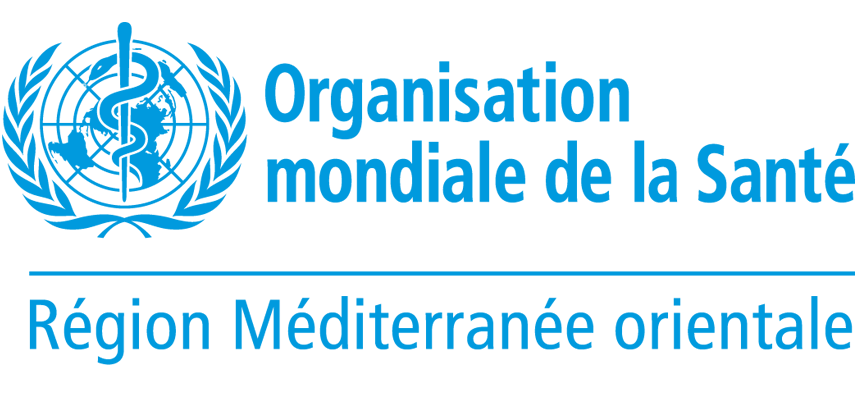On the 7th of April every year, World Health Day is celebrated in the Eastern Mediterranean Region and across the world. This has always been an opportunity to highlight an important public health issue and to promote discussion and debate of various aspects of prevention and promotion of health. This year’s World Health Day 2004 highlights road safety with the slogan “Road safety is no accident”.
Globally, the burden of disease due to injuries has increased from about 12% in 1999 to 15% in 2000 and is expected to rise even further by the year 2020. Road traffic injuries in particular are on the rise and the situation is expected to get worse in the coming years. By 2020 road traffic injuries are forecast to rise from the 9th to the 3rd leading cause of disability adjusted life years (DALYs) lost . It is estimated that by 2020 road traffic injuries will account for about 2.3 million deaths a year, almost double the current burden of mortality of 1.2 million deaths each year. The worrisome aspect is that 90% of these deaths are expected in the less motorized countries.
In the countries of the Eastern Mediterranean Region, the risk of death and disability due to road traffic accidents generally increases with increasing per capita income. Risk of death due to road accidents in the Region, according to available data, ranges from about 8 deaths per 100 000 population in Yemen to 24 deaths per 100 000 population in Oman. Death rates per 10 000 vehicles are highest in the Syrian Arab Republic with 36 deaths/10 000 vehicles and lowest in Bahrain with 3 deaths/10 000 vehicles. However, if these figures are composed clearly with those of a developed country like UK, which has 1.5 deaths/10 000 vehicles, clearly people in our Region are more likely to die because of road traffic accidents. According to the World Health Report 2003 a total of 132 000 deaths occurred in 2002 in the Eastern Mediterranean Region because of road traffic accidents alone.
More disturbing still is that the most affected road users in the Region are pedestrians, cyclists and public transport users. Road traffic injuries are the second leading cause of death among children and people of working age. Injuries and disabilities, which result from road traffic accidents, have enormous economic and social consequences for the injured person, the family, the community and the country. They are estimated to cost governments in developing countries between 1% and 2% of GNP annually. This is a loss of about US$ 520 billion every year, more than the total development assistance received worldwide for developing countries. The World Bank estimates that in 1999 alone the cost incurred to the governments in the Eastern Mediterranean Region by road traffic accidents was more than US$ 7.5 billion.
Road traffic injuries and deaths can be prevented. Many effective strategies have been identified and implemented in developed countries and a slow but steady decline has been noted in these countries. The type of road traffic injuries in developing countries, however, differs significantly from those in the developed world. Problems such as poor data, low political priority, risky behaviour by road users, lack of intersectoral coordination, contending economic and political interests in public road transport, poor roads and even poorer law enforcement, set the scene for an unprecedented co-influence of risks on the roads. As a result, prevention strategies, technologies and policies cannot simply be transplanted from developed countries to the developing world.
Nevertheless, this gloomy picture should not, in any way, deter us from making a fitting response in order to alleviate the sufferings of the people of the Region on the one hand and to prevent economic and social loss on the other. The World Health Organization, realizing the critical nature of the problem, is endeavouring to mobilize governments, organizations and communities to effectively tackle this problem. The theme of “Safe Roads” was selected for the World Health Day campaign 2004 with the aim of generating interest among the different stakeholders, communities and organizations in developing the strategies needed to combat this menace.
The World Report on Road Traffic Injury Prevention, a joint WHO and World Bank activity, is also being launched on World Health Day. The purpose of the report is to present a comprehensive assessment of what is known about the magnitude and impact of this multi-sectoral problem and the intervention strategies available. At the regional level, several countries in the Region have already initiated action to tackle the problem and reduce the burden of death and disabilities caused by road traffic injuries, including Djibouti, Egypt, Islamic Republic of Iran, Oman and Saudi Arabia.
World Health Day is not merely a celebration event but a commitment towards a cause, dedication to an objective and a promise for a better future. Prevention of road traffic injuries relies on different sectors: government, nongovernmental organizations, media, private business, local communities, schools, transport and health sector. Raising the level of awareness of all those involved is a prerequisite to road traffic injury prevention. There should be a focus on road users’ behaviour, on improved infrastructure and safety and maintenance of vehicle. It is crucial to obtain a commitment of individuals to their own safety and that of their passengers and other road users, including pedestrians, and to the possibility of generating new solutions by tapping into the potential in the community.
The launch of World Health Day is only the beginning of a year-long global campaign on road traffic injury prevention. Let us all join hands so that children and parents can return to their homes at the end of each and every day is safety. Together, I am sure, we can make a difference.
Dr Hussein A. Gezairy, Regional Director for the Eastern Mediterranean
On the 7th of April every year, World Health Day is celebrated in the Eastern Mediterranean Region and across the world. This has always been an opportunity to highlight an important public health issue and to promote discussion and debate of various aspects of prevention and promotion of health. This year’s World Health Day 2004 highlights road safety with the slogan “Road safety is no accident”.
Globally, the burden of disease due to injuries has increased from about 12% in 1999 to 15% in 2000 and is expected to rise even further by the year 2020. Road traffic injuries in particular are on the rise and the situation is expected to get worse in the coming years. By 2020 road traffic injuries are forecast to rise from the 9th to the 3rd leading cause of disability adjusted life years (DALYs) lost . It is estimated that by 2020 road traffic injuries will account for about 2.3 million deaths a year, almost double the current burden of mortality of 1.2 million deaths each year. The worrisome aspect is that 90% of these deaths are expected in the less motorized countries.
In the countries of the Eastern Mediterranean Region, the risk of death and disability due to road traffic accidents generally increases with increasing per capita income. Risk of death due to road accidents in the Region, according to available data, ranges from about 8 deaths per 100 000 population in Yemen to 24 deaths per 100 000 population in Oman. Death rates per 10 000 vehicles are highest in the Syrian Arab Republic with 36 deaths/10 000 vehicles and lowest in Bahrain with 3 deaths/10 000 vehicles. However, if these figures are composed clearly with those of a developed country like UK, which has 1.5 deaths/10 000 vehicles, clearly people in our Region are more likely to die because of road traffic accidents. According to the World Health Report 2003 a total of 132 000 deaths occurred in 2002 in the Eastern Mediterranean Region because of road traffic accidents alone.
More disturbing still is that the most affected road users in the Region are pedestrians, cyclists and public transport users. Road traffic injuries are the second leading cause of death among children and people of working age. Injuries and disabilities, which result from road traffic accidents, have enormous economic and social consequences for the injured person, the family, the community and the country. They are estimated to cost governments in developing countries between 1% and 2% of GNP annually. This is a loss of about US$ 520 billion every year, more than the total development assistance received worldwide for developing countries. The World Bank estimates that in 1999 alone the cost incurred to the governments in the Eastern Mediterranean Region by road traffic accidents was more than US$ 7.5 billion.
Road traffic injuries and deaths can be prevented. Many effective strategies have been identified and implemented in developed countries and a slow but steady decline has been noted in these countries. The type of road traffic injuries in developing countries, however, differs significantly from those in the developed world. Problems such as poor data, low political priority, risky behaviour by road users, lack of intersectoral coordination, contending economic and political interests in public road transport, poor roads and even poorer law enforcement, set the scene for an unprecedented co-influence of risks on the roads. As a result, prevention strategies, technologies and policies cannot simply be transplanted from developed countries to the developing world.
Nevertheless, this gloomy picture should not, in any way, deter us from making a fitting response in order to alleviate the sufferings of the people of the Region on the one hand and to prevent economic and social loss on the other. The World Health Organization, realizing the critical nature of the problem, is endeavouring to mobilize governments, organizations and communities to effectively tackle this problem. The theme of “Safe Roads” was selected for the World Health Day campaign 2004 with the aim of generating interest among the different stakeholders, communities and organizations in developing the strategies needed to combat this menace.
The World Report on Road Traffic Injury Prevention, a joint WHO and World Bank activity, is also being launched on World Health Day. The purpose of the report is to present a comprehensive assessment of what is known about the magnitude and impact of this multi-sectoral problem and the intervention strategies available. At the regional level, several countries in the Region have already initiated action to tackle the problem and reduce the burden of death and disabilities caused by road traffic injuries, including Djibouti, Egypt, Islamic Republic of Iran, Oman and Saudi Arabia.
World Health Day is not merely a celebration event but a commitment towards a cause, dedication to an objective and a promise for a better future. Prevention of road traffic injuries relies on different sectors: government, nongovernmental organizations, media, private business, local communities, schools, transport and health sector. Raising the level of awareness of all those involved is a prerequisite to road traffic injury prevention. There should be a focus on road users’ behaviour, on improved infrastructure and safety and maintenance of vehicle. It is crucial to obtain a commitment of individuals to their own safety and that of their passengers and other road users, including pedestrians, and to the possibility of generating new solutions by tapping into the potential in the community.
The launch of World Health Day is only the beginning of a year-long global campaign on road traffic injury prevention. Let us all join hands so that children and parents can return to their homes at the end of each and every day is safety. Together, I am sure, we can make a difference.
Dr Hussein A. Gezairy, Regional Director for the Eastern Mediterranean








